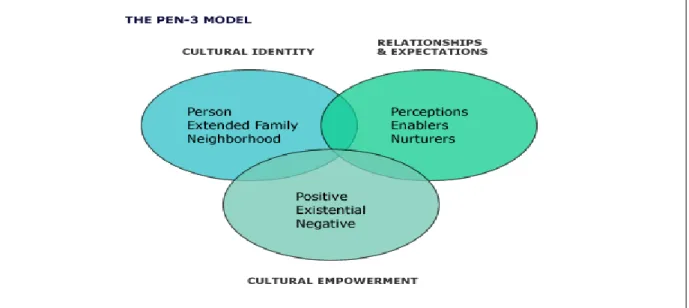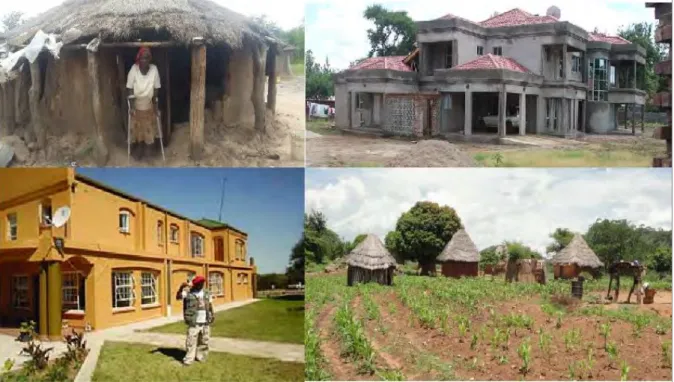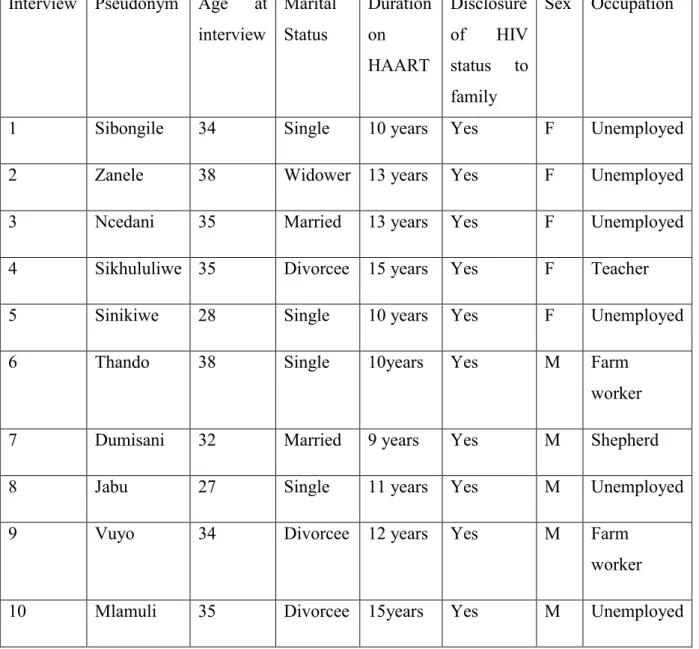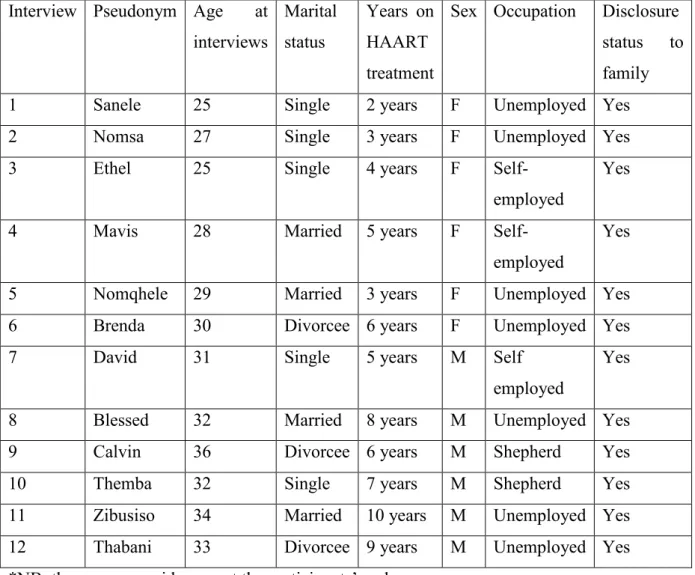The results of HIV/AIDS indicate that the pandemic remains the greatest threat to a better life globally. In Zimbabwe, HIV/AIDS has accounted for the highest recorded and unrecorded cases of death. The in-depth interviews were conducted with five men and five women living with HIV/AIDS from Tsholotsho.
Focus group discussions were also held with ten people, men and women, living with HIV/AIDS in Tsholotsho. The study recommends that the government consider revamping the social welfare department that previously provided safety nets for people living with HIV/AIDS who cannot access the necessary diet.
INTRODUCTION
- Background of the study
- Nutrition and HIV/AIDS
- Aims of the Study
- Theoretical Framework
- Organization of dissertation
There was a huge gap in funding of the health sector in general and HIV/AIDS programs in particular. This worsened the state of the health system and further limited the provision of medication and nutritional supplements to people living with HIV (McQueen et al. 2010). What are some of the challenges Tsholotsho residents on HAART treatment face in obtaining adequate nutrition.
One of the reasons for conducting the study in Tsholotsh is the high prevalence of HIV/AIDS infections. Culture plays an important role in determining the level of health of the individual, family and community.

LITERATURE
- Introduction
- Food availability
- Poverty
- Safety nets
- Globalization
- Gender
- Cultural preferences
- Household demographics
- Food diversity
- Environment and food
- Conclusion
The study concluded that poverty was the main reason why people with HIV/AIDS could not obtain a nutritional diet. The study found that people with HIV and less education than the basic level are more vulnerable to food insecurity than those with education. The study found that educational status was significantly associated with nutritional status of people living with HIV/AIDS.
The study found that AIDS puts a strain on extended family resources over a number of years, adding to the challenges faced by people living with HIV in resource-limited areas. The study concluded that HIV/AIDS had a negative impact on the effectiveness of society's safety net. The study pointed out that the deterioration of the health indicators would lead to higher health costs.
The study noted that hunger and food insufficiency were widespread among people living with HIV/AIDS even for those living in resource-rich environments.
METHODOLOGY
- Introduction
- Study Area
- Research Approach
- In-depth interviews
- Focus Group Discussion (FGDs)
- Case study
- The Process of Data Collection
- Data analysis
- Ethical considerations
- Limitations of the study
- Summary
All interviews were conducted using face-to-face interviews in the participant's home. At the meeting, the researcher informed the participants about the main purpose of the study and addressed any concerns about the research. Those who were interested in participating in the study made reservations with the researcher to be part of the study.
The researcher invited all the participants who wanted to participate in the study and explained the purpose of the study. The researcher addressed any concerns with the study and explained how the participants would contribute to the outcome of the research. Group discussions were conducted in the language of choice of the participants. The participants who agreed to participate in the study were asked to sign informed consent forms.
Tham et al.(1991) claim that a case study enables the researcher to gain a rich understanding of the context of the research and the processes being carried out. Respondents were presented with consent forms to sign to indicate their understanding of the purpose of the study and their willingness to participate in the study. The consent forms were signed by the participants to indicate their understanding of the study and to indicate their voluntary participation in the study.
Thematic analysis looks for themes that emerge as important for the description of the phenomenon. The researcher first introduced herself and then explained the purpose of the study and asked questions from potential respondents. Some of the respondents withdrew from the study possibly as a result of the lack of financial incentives.

RESULTS
- Introduction
- Demographic profile of the participants
- Effect of the economic crisis
- Dissolution of Safety Nets
- Lack of food leads to non-adherence
- Indigenous versus western diets
- Summary
Most of the respondents indicated that as a result of economic marginalization the majority of the economically active group had migrated to the neighboring countries. One of the respondents indicated that in the early 2000s the ARVs were not freely provided, but sold to those who needed them. Some of the respondents claimed that taking the treatment without food would make them feel dizzy.
This was also emphasized by one of the health workers in Tsholotsh, who stated that the lack of employment opportunities for people living with HIV/AIDS makes patients more vulnerable to hunger. Some people living with HIV and on HAART are highly dependent on other people to provide them with adequate nutrition. All respondents stated that they did not have snacks between meals.
Most participants said they enjoyed it and considered it very nutritious. Some respondents indicate that they have no control over what they eat due to a lack of independence. Some family members would discriminate against people with HIV/AIDS who depend on them for food.
Some respondents indicated that they had not read the ingredients and food labels on food packaging. Most people here in Tsholotsho cannot follow the instructions on the food packages due to their low level of education. The western indigenous food conundrum expressed by some respondents was also highlighted by one of the nurses working in the Tsholotsho area.
Most of the people are influenced by what the media advocates to be good. All the respondents indicated that they mostly rely on gathering wild vegetables such as mushrooms and wild plants.

DISCUSSION, CONCLUSION AND RECOMMENDATIONS
Recommendations
Obtaining adequate nutrition is the greatest need for people with HIV/AIDS (WHO and studies have shown that low body mass index is an independent predictor of mortality in people with HIV/AIDS (Paton, 2006; Van der Sande et al. Furthermore, it can be argued that those living with HIV/AIDS who are on antiretroviral therapy and do not have the means to meet their basic nutritional needs should be fed and assisted to achieve food security through the provision of income or other forms of livelihood.
A randomized trial conducted in the United States, Thailand and Tanzania reported associations between multi-vitamin supplementation and improvements in immunological and clinical status of people living with HIV/AIDS. Support structures must be in place to ensure that people living with HIV/AIDS receive vitamin supplements from the clinics to improve their immune systems. In an effort to help the people living with HIV/AIDS, the government may need to revive the Department of Social Welfare and provide grants to support the people living with HIV who cannot afford a nutritious diet.
This will enable people living with HIV/AIDS on antiretroviral treatment to meet their basic needs. Providing social grants will help reduce the chances of hunger and starvation, which are the main challenges faced by people living with HIV/AIDS on antiretroviral therapy. Furthermore, the government should invest in improving the health sector and train doctors in their use as it will greatly help in accounting for the various nutritional needs of people living with HIV/AIDS.
Effective food and nutrition policy responses to HIV/AIDS: what we know and what we need to know. Nutritional status and associated factors among adult HIV/AIDS clients in Felege Bahir Dar, Ethiopia. AIDS is in the food ‖: Zimbabweans' Association between nutrition and HIV/AIDS and other potential to address food insecurity and HIV/AIDS.
If someone else prepares food, they alternate different cooking methods to make the food delicious for you. Ever since you got sick, it has affected the food consumption patterns of your family. Briefly explain the role that your friends, family, religious groups and peer groups play in ensuring that you follow a nutritious diet.
11. What role do the health centres, community centers and primary schools play in ensuring that you follow a nutritious diet. What are the gender norms of Tsholotsho and what is the status of women in this society. What are some of the challenges you face as a result of unemployment in obtaining a balanced diet.
If it runs out before you get the next allotment, how does the family survive. Have you ever treated yourself on an empty stomach if you couldn't get food.
There are no consequences if the participant wishes to withdraw from the study. If the participant wishes to withdraw from the study, he or she simply indicates that he or she is not interested in continuing the study. Verbal communication is acceptable to exclude any participant who wishes to withdraw from the study.
The researchers will only terminate the participant if they indicate that they are not interested in continuing their participation. There are no costs for participants to participate in the study. The participants will each receive a food basket worth R100 each as a token of gratitude for participating in the study.
Moreover, there is hunger in Tsholotsho, so the participants are compensated for their efforts to participate in the study. The steps that will be taken to protect the confidentiality of the data obtained are as follows. The key code that links fake names is kept in a locked filing cabinet in a locked office, and no one else has access to it.
The data obtained will be used to explain the nutritional challenges faced by people living with HIV/AIDS in the HAART era and can be used as a basis for articles or presentations in the future. I (name) ……….have been informed about the study entitled 'Nutrition in the era of Highly Active Antiretroviral Therapy (HAART): A case study of people living with HIV in Tsholotsho, Zimbabwe' by Nobuhle Moyo. I have been informed of the availability of counseling services that will be provided in the event of any trauma that occurs to me as a result of study-related procedures.
